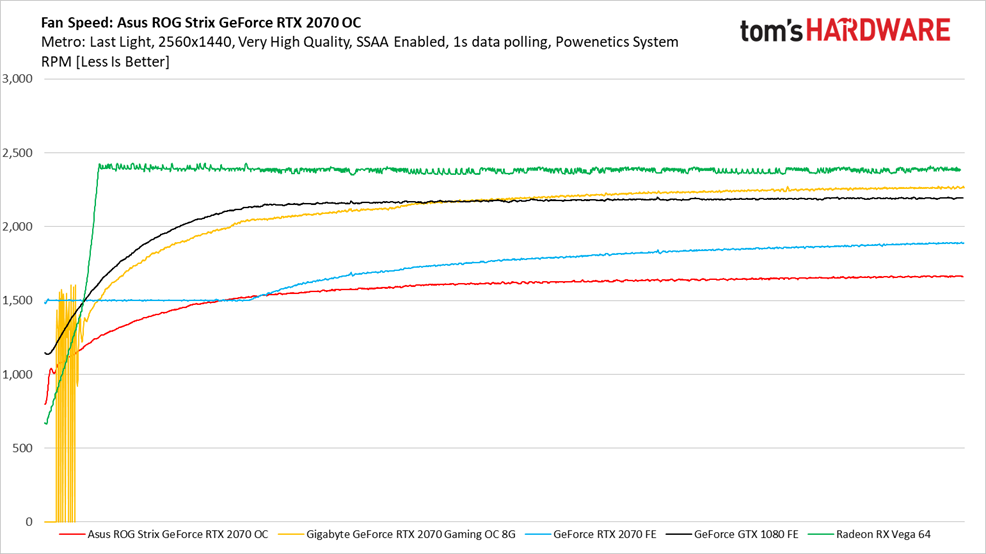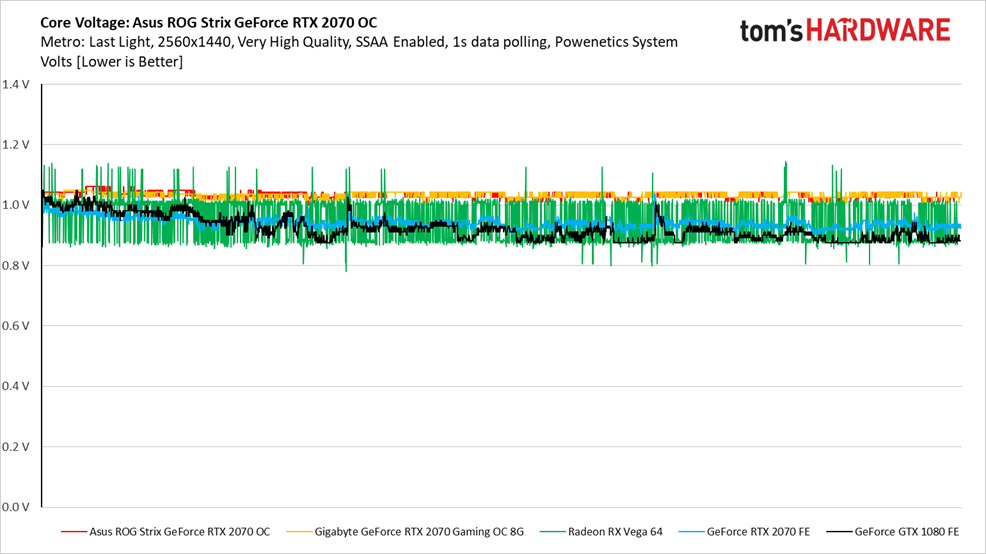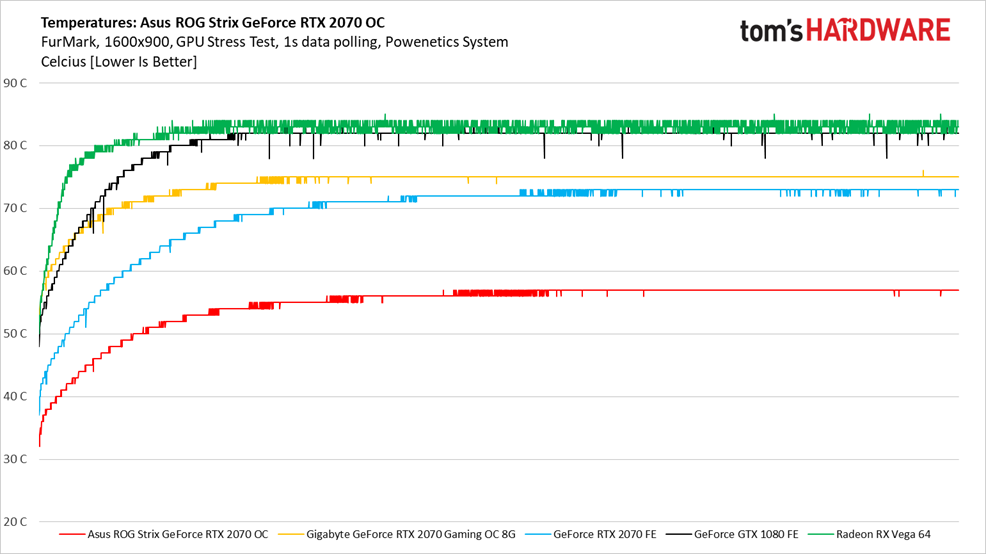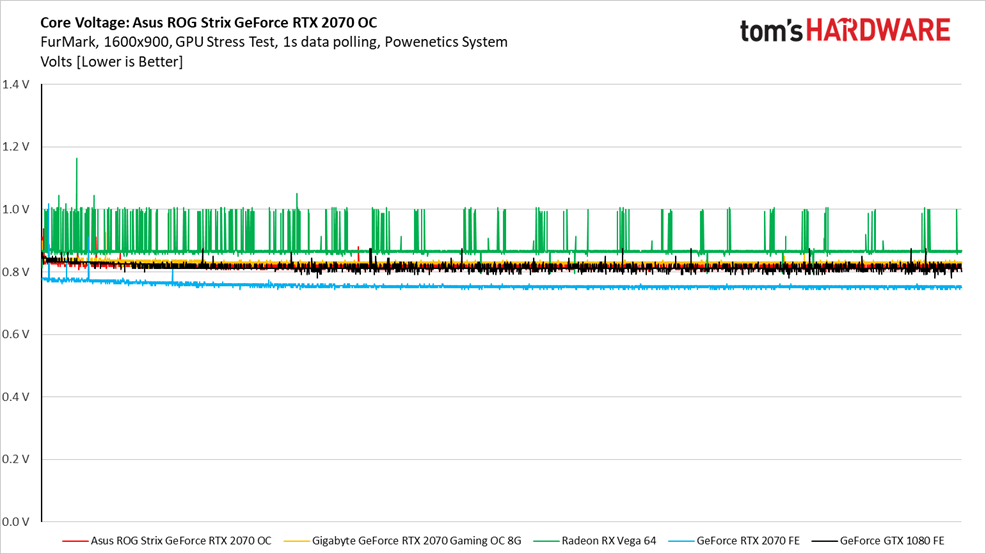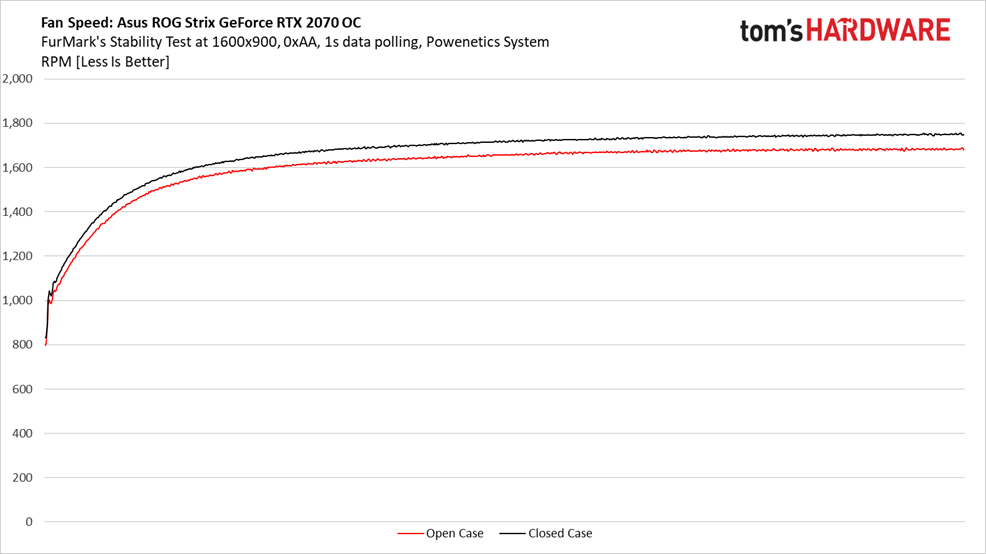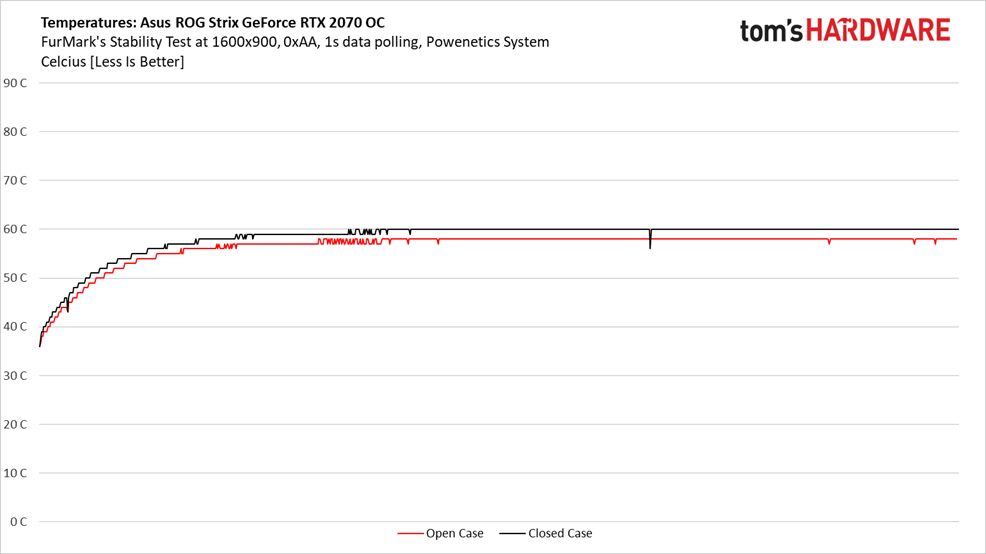Asus ROG Strix GeForce RTX 2070 O8G Gaming Review: Bring Out The Big Guns
Why you can trust Tom's Hardware
Temperatures and Fan Speeds
Gaming
Aside from a slight dip at the beginning of its curve, Asus’ ROG Strix ramps up more smoothly than the other cards in our comparison.
There is one brief point where the fans on Nvidia’s GeForce RTX 2070 FE spin slower than Asus’ card. However, as the Founders Edition board heats up, its thermal solution must work harder to keep pace. In comparison, the ROG Strix GeForce RTX 2070 O8G Gaming is topped with a massive heat sink that helps with heavy lifting. The result is a more gradual slope and extremely quiet operation.
The ROG Strix also demonstrates the lowest GPU temperature across our test field in its Performance mode. Whereas the competition from Gigabyte and Nvidia exceed 70°C, Asus’ solution tops out at 58°C.
Charting voltage across our run tells us that Asus and Gigabyte keep the TU106 GPU above 1V, whereas Nvidia averages 0.934V once its card warms up. Asus maintains ~1,905 MHz through the end of our test and Gigabyte is more consistently around 1,890 MHz. The Founders Edition card flounders around 1,770 MHz.
FurMark
Again, the ROG Strix GeForce RTX 2070 O8G’s fan curve ramps up more gently than any other card in our comparison.
The fans on Nvidia’s GeForce RTX 2070 Founders Edition spin faster than Asus’ card at every point during our benchmark. Gigabyte’s GeForce RTX 2070 Gaming OC does start in passive mode. But it goes through a series of pulses early on and blows right past the other 2070s.
Temperatures don’t change much as we shift from Metro to FurMark. Rather, our entire test field pulls back on voltage. Clock rates are simultaneously dragged down. Asus’ card is forced under 1,600 MHz. Gigabyte’s holds onto 1,620 MHz. Meanwhile, the Founders Edition model drops all the way down to ~1,450 MHz.
Get Tom's Hardware's best news and in-depth reviews, straight to your inbox.
Open Case/Closed Case
Coolers operating close to their capacity must work a lot harder when we seal off the side of our test system’s case, trapping in warmer ambient air. The fans on Asus’ ROG Strix GeForce RTX 2070 O8G Gaming do spin about 70 RPM faster with our Corsair Obsidian 750D’s panel in place. But that’s less severe than some of the other cards we’ve tested.
The TU106 GPU runs one to two degrees warmer as its ambient environment heats up.
MORE: Best Graphics Cards
MORE: Desktop GPU Performance Hierarchy Table
MORE: All Graphics Content
Current page: Temperatures and Fan Speeds
Prev Page Power Consumption Next Page Software and Overclocking